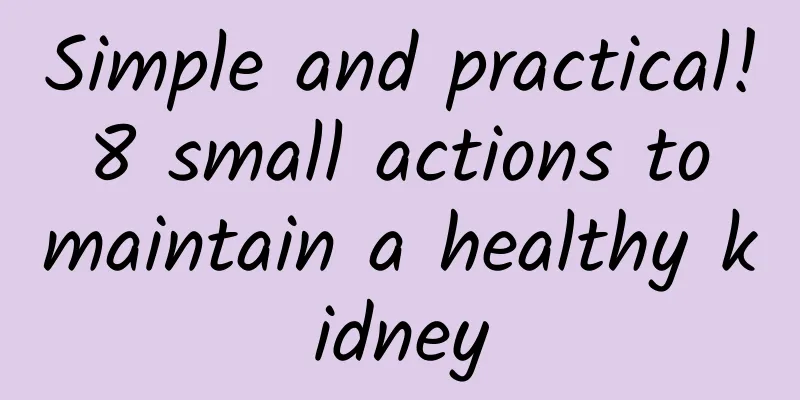6 chestnuts = 1 bowl of rice? Do sugar-roasted chestnuts on the street cause cancer? Chestnuts are delicious, but you should pay attention to these things →

|
gossip Chestnuts are a popular food, especially in autumn and winter, when the aroma of sugar-roasted chestnuts fills the streets. Buy a bag and hold it in your hands. It smells good, tastes good, and keeps you warm. As more people eat it, there are many legends about it. Some people say: Chestnuts are very high in energy, 6 chestnuts = 1 bowl of rice . Some people also believe that the sugar-roasted chestnuts sold on the street contain paraffin, and eating too much of it can cause cancer . So, are these claims credible? Here, let’s talk about the rumors about chestnuts. analyze Nutritional value and function of chestnut In the market, people give chestnuts many "health benefits", mostly from the chestnuts themselves rich in nutrients. In fact, these are just good wishes, without sufficient evidence to support them. The so-called "chestnuts are rich in XX ingredients and have XX effects" is just far-fetched. First of all, "XX ingredient has XX physiological function" is different from "taking XX ingredient can prevent and cure diseases". Secondly, there are many foods that “contain XX ingredients”, and chestnuts cannot even be considered an “excellent source”. Copyrighted stock images, no reproduction is authorized Chestnuts and rice are mainly carbohydrates, with very limited fat and protein content. Compared with rice, raw and cooked chestnuts contain significantly higher levels of vitamins, minerals, dietary fiber and other nutrients than rice. From this perspective, the "nutritional value" of chestnuts is more comprehensive than that of rice, but strictly speaking, there is no good or bad nutritional value for different foods, the key is the dietary structure of the combination. Simply put, the nutritional value of chestnuts and rice is relatively simple, and they are only suitable as "staple foods" to provide energy, but the overall "nutrition" is not superior. 6 chestnuts = 1 bowl of rice? We often see the saying "6 chestnuts equal 1 bowl of rice". However, chestnuts and rice are different species of food, so it is difficult to directly compare them in terms of quantity. In other words, it is not realistic to discuss how many chestnuts "equal" how much rice. However, if we want to discuss the quantitative relationship between the two, we can start with energy and make a comparison. Generally, the weight of a cooked chestnut kernel is about 6 grams, with large chestnuts being heavier and small chestnuts being lighter. Six chestnuts weigh about 35 to 40 grams. According to the nutritional data in the standard version (first edition) of the Chinese Food Composition Table, the energy of cooked chestnuts is 214 kcal/100 g, and the total energy of the edible part of six chestnuts is roughly between 75 and 85 kcal. The energy of "a bowl of rice" is closely related to the size of the bowl and the water content of the rice. We estimate based on the average calorie value of "steamed rice" in the nutritional data (116 kcal/100 g), and a "small bowl" in a general restaurant is about 100 g. Compared with the "75-85 kcal" of 6 grams of chestnuts, the difference between "a bowl of rice" and "a bowl of rice" is not that big. If we consider that some chestnuts are relatively large, and 6 of them weigh more than 40 grams, and on the other hand, some rice is highly absorbent and has a higher water content (and therefore lower energy), the statement "6 chestnuts (their energy) is equal to 1 bowl of rice" is a bit exaggerated, but not outrageous. However, it is not reasonable to conclude from this aspect alone that "6 chestnuts = 1 bowl of rice". Other nutrients also play a role. The energy of the two is similar, but not the same. Copyrighted stock images, no reproduction is authorized Does eating too much sugar-roasted chestnuts sold on the street cause cancer? Regarding the fact that "eating too much sugar-roasted chestnuts can cause cancer", it means that paraffin is added to the sugar-roasted chestnuts sold on the street, and industrial paraffin contains a variety of heavy metals and organic pollutants. Paraffin is an additive that can be used in food processing, but it needs to be "food grade paraffin". The traditional process of roasting chestnuts with sugar is to use vegetable oil and sugar, and no paraffin is used. However, paraffin liquid can also make chestnuts smooth and shiny instead of oil, and the cost is lower, so some unscrupulous vendors may use paraffin, and they use cheap industrial paraffin. For this kind of behavior, we mainly rely on food safety regulatory departments to regulate and supervise, and it is difficult for consumers to judge it themselves. After all, the "discrimination methods" that consumers can learn are often also learned by illegal vendors, and they will also take corresponding measures to "pass off the fake as the real thing." For consumers, the most effective way to protect themselves is to choose a business that is as reliable as possible. For example, a store that has been operating in a place for many years, is large in scale, and has a business license is more likely to be reliable than a roadside stall. A store with complete licenses and a fixed address does not mean that there is "absolutely no problem", but compared with a "roadside stall" that is outside the supervision, the possibility of "playing tricks" is still much smaller. Copyrighted stock images, no reproduction is authorized Of course, if you only eat sugar-roasted chestnuts occasionally, you don't have to worry too much. After all, whether it is paraffin or vegetable oil/sugar, it is mainly distributed on the surface, especially for chestnuts that are not opened, it cannot enter the kernel. In the end, what you "eat" is just the part that sticks to your hands when peeling, and then sticks to the chestnut. From the perspective of "avoiding risks as much as possible", we should avoid buying such "unqualified products", but if you just want to eat it, the actual "risk" is still not great. What should you pay attention to when eating chestnuts? Chestnut is a delicious food, but it is also just an ordinary food. Those legendary "effects" are just far-fetched expectations and should not be taken seriously. It should be noted that chestnuts are generally a relatively simple food, with a low sense of fullness but high energy. If you use it to replace "staple foods" such as rice and steamed buns, it is a good choice, but if you want to use it as a "snack", you should control the amount you eat. As a kind of nut, chestnuts are also easily infected by Aspergillus flavus, which can produce aflatoxin. Therefore, you should pay attention to choosing high-quality and intact chestnuts. If you find moldy or discolored kernels, don't eat them. Now, there are some big brands on the market that use modern technology to make chestnuts into pre-packaged foods. Compared with the "sugar-fried chestnuts" on the street, they lack some of the "wok flavor" and "smoke flavor", but from the perspective of food safety, they are better regulated, and the possibility of legal and standardized processing technology and packaging and storage is much higher, and safety is often better guaranteed. Copyrighted stock images, no reproduction is authorized in conclusion Chestnuts and rice are different foods, and it is not reasonable to compare them directly in terms of quantity. If we compare them in terms of energy, the statement that "6 chestnuts have the same energy as 1 bowl of rice" is a bit shocking, but it is not without reason. The main reason is that chestnuts do have a high energy, so although this statement is exaggerated, it is not particularly outrageous. Regarding the statement that "eating too much sugar-roasted chestnuts on the street can cause cancer", if some unscrupulous vendors use industrial paraffin to roast chestnuts, theoretically, the heavy metals in it will cause certain damage to human health. But in fact, the paraffin is only wrapped on the chestnut skin, and the amount people can be exposed to is very small. Do not bite the chestnut skin directly with your mouth. The risk of cancer is minimal if you eat it occasionally, so there is no need to worry too much. Author: Yun Wuxin, PhD in Food Engineering, Science Writer Reviewer: Zhao Yong, Professor of Nutrition and Food Hygiene Department, School of Public Health, Chongqing Medical University Planning丨Zhong Yanping Editor: Zhong Yanping Layout by Li Mengxin |
<<: Can a virus be transmitted through kissing? That’s right, it’s called the “kissing virus”!
Recommend
Is it okay to rinse your vagina with soda water?
Nowadays, many women have gone too far in terms o...
Can I eat Shouwu during menstruation?
Shouwu is a medicinal food and cannot be taken as...
Harm of pickled fish to pregnant women
Sauerkraut fish is a dish that many people like t...
When will Itaewon Class be released? Where can I watch the Korean drama Itaewon Class?
Itaewon Class is a drama based on the comic of th...
A high-quality life starts with learning how to sleep
Sleeping eight hours a day and drinking eight gla...
What are the contraindications of gynecological Chinese medicine?
With the rapid development of economy and the imp...
Red spots on the body during pregnancy
Many women will develop some red spots on their b...
How long after the photo can I have sex?
Hysterosalpingography is a common examination met...
Symptoms of foul-smelling leucorrhea
In fact, in today's society, the roles of fem...
The old Chinese doctor cured severe vomiting during pregnancy
Vomiting during pregnancy is mostly caused by the...
Stress leads to obesity! How to break out of the vicious cycle of "stress → eating → stress"?
Audit expert: Wu Xi Deputy Chief Physician, Depar...
Causes of breast hyperplasia
In life, many young female friends devote their p...
How to fix leather jackets that become hard after washing?
Leather jackets are a common item in life. They a...
Can women take motherwort granules for a long time?
Motherwort granules are an important medicine for...









